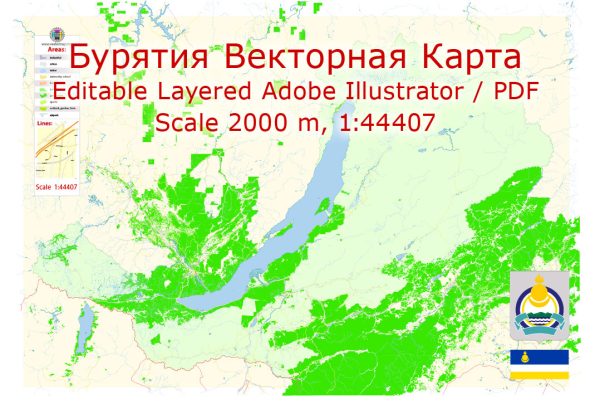Buryatia is a federal subject of Russia located in Eastern Siberia, near the southern tip of Lake Baikal. The region has a diverse and complex geological history, with a variety of geological features and formations. Here is a general description of the geology of Buryatia:
- Precambrian Basement: Buryatia’s geology is dominated by the presence of ancient Precambrian rocks that make up the basement of the region. These rocks have been dated to over 2 billion years old. They consist of granites, gneisses, and metamorphic rocks, which form the foundation upon which more recent geological formations have been laid.
- Lake Baikal: One of the most prominent geological features in Buryatia is Lake Baikal, the world’s deepest freshwater lake. Lake Baikal is the result of a tectonic rift zone, where the Earth’s crust is being pulled apart. The lake is estimated to be around 25 million years old and is situated along a fault line.
- Folded and Thrust Belts: Buryatia is part of the Siberian Craton, and it features folded and thrust belts, which are the result of tectonic plate collisions and mountain-building processes that occurred over millions of years. The Sayan Mountains, located to the west of Buryatia, are an example of such geological formations.
- Volcanic Activity: There is evidence of volcanic activity in Buryatia’s geological history. The Tunka volcanic plateau, situated to the east of Lake Baikal, has numerous volcanic features, including cones and lava flows. The volcanic activity in the region is primarily related to the complex tectonic interactions between the Eurasian and Amurian plates.
- Sedimentary Basins: Buryatia also contains sedimentary basins with deposits of various sedimentary rocks, including sandstones, shales, and limestone. These rocks provide valuable information about the region’s geological history and environmental changes over time.
- Mineral Resources: Buryatia is known for its mineral resources, including deposits of various metals and minerals such as copper, gold, lead, zinc, and molybdenum. These resources have been historically important for the region’s economy.
- Earthquakes: Buryatia, particularly in the area around Lake Baikal, is seismically active due to the tectonic processes at work. Earthquakes are relatively common in this region, and it is monitored closely for seismic activity.
Overall, Buryatia’s geology is a reflection of its complex geological history, shaped by tectonic movements, volcanic activity, and the presence of Lake Baikal. The region’s geological features have had a significant impact on its landscape, natural resources, and local ecosystems.


 Author: Kirill Shrayber, Ph.D.
Author: Kirill Shrayber, Ph.D.